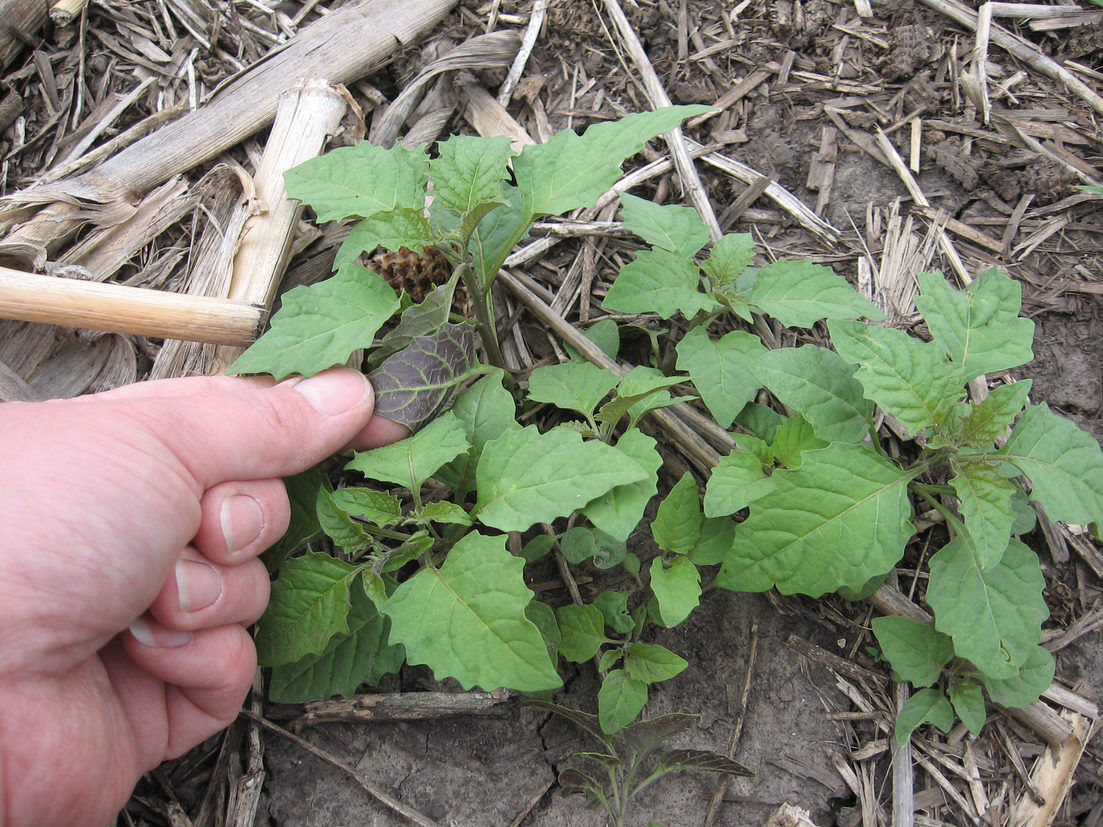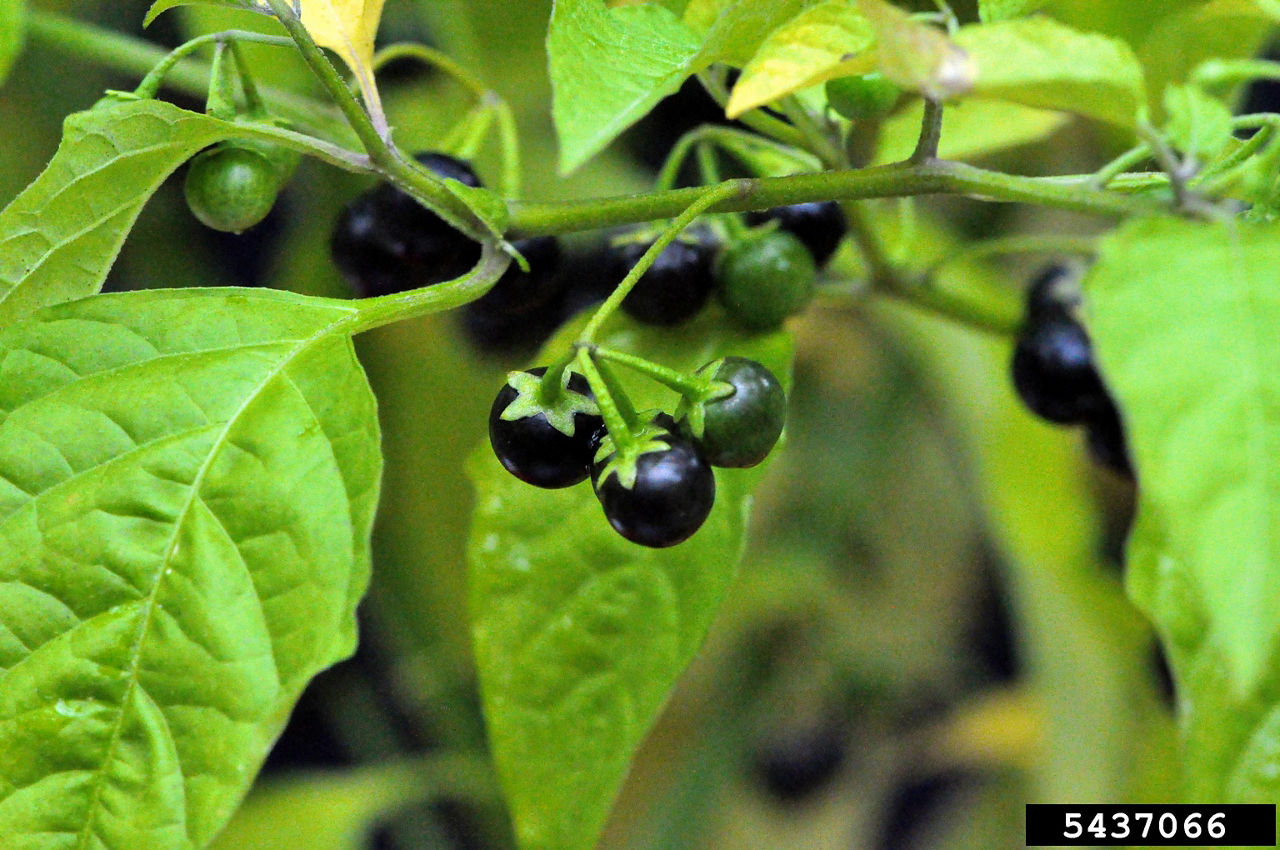5 MIN READ
Description and Control of Eastern Black Nightshade
April 28, 2021
Eastern black nightshade is very toxic, making it a potential nuisance to people and livestock. While all parts of the plant are considered poisonous, the green leaves, stems, and seeds are especially toxic. The berries are most toxic in their green immature stage and become less dangerous as they ripen. Levels of harmful chemicals are often much higher after periods of hot and dry conditions. Livestock producers must be cautious when using feed thought to be contaminated with Eastern black nightshade as the harvested plant tissues remain poisonous.
Other annual members of the Solanaceae family can be easily confused with Eastern black nightshade. American black nightshade (Solanum americanum), black nightshade (Solanum nigrum), and hairy nightshade (Solanum sarrachoide) can be easily misidentified as Eastern black nightshade. Hairy nightshade is typically found only in the northeastern United States, and it can be distinguished from Eastern black nightshade by the lack of red-purple coloration on the lower surface of the leaves and upon close inspection of the fruit: the calyx (sepals) may cover as much as half the berry. Black nightshade can be identified by its more oblong/oval leaf shape and smooth margins. Smooth groundcherry (Physalis subglabrata) and horsenettle (Solanum carolinense), perennial members of the Nightshade family, have seedlings that may look like Eastern black nightshade seedlings, but these weeds typically emerge from rootstock.
Management
As with most weeds, an integrated control program combining preventive, cultural, mechanical, and chemical methods is the most effective way to control Eastern black nightshade. Nightshade emerges sporadically thought the growing season, which can make management challenging. Existing nightshade infestations in hay crops or pastures can be controlled by timely and repeated mowing or swathing to prevent seed production.
In agricultural row crops like corn or soybean, cultivation can be helpful to bury weed seeds or to provide control of emerged plants. Most tillage operations, inducing chisel plowing, disking, or field cultivating, can destroy emerged weeds but may stimulate weed emergence. Tillage that inverts the soil may bury seeds and prevent emergence but is likely not practical for most farming operations.
A properly timed herbicide application, following all label procedures and guidelines, can increase control of this weed species. In corn, application of preemergence herbicides such as atrazine, acetochlor, metolachlor, dimethenamid, and imazethapyr have provided good to excellent residual control of this week, especially when followed by post emergence applications of herbicides such as glyphosate (in Roundup Ready® Corn 2), atrazine, topramezone, bromoxynil, mesotrione, and tembotrione.
Control in soybean is made more difficult due to limited in-crop options, making residual weed control essential. Preemergence application of ALS inhibiting herbicides and PPO inhibiting herbicides like sulfentrazone and flumioxazin offer residual control and can be followed with post emergence applications to soybeans with resistance to glyphosate (in Roundup Ready® soybeans), dicamba (in Roundup Ready 2 Xtend® Soybeans or XtendFlex® Soybeans), glufosinate (in LibertyLink® Soybeans, LibertyLink® GT27™ Soybeans, or Enlist E3® Soybeans), or 2,4-D (in Enlist E3® soybeans).
Matthew Nelson
Sources
US Forest Service. The powerful Solanaceae. https://www.fs.fed.us/wildflowers/ethnobotany/Mind_and_Spirit/solanaceae.shtml.
Werner, E.L., Curran, W.S., Lingenfelter, D.D., and Chambers, R. 1998. Management of eastern black nightshade in agronomic crops: An integrated approach. Agronomy Facts 58. Penn State Extension. The Pennsylvania State University.
Bradley, K., and Craigmyle, B. 2011. Weed of the month: Eastern black nightshade. Integrated Pest and Crop Management: University of Missouri. https://ipm.missouri.edu/.
Web sites verified 2/10/21.

